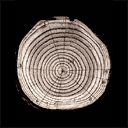Forest health
Forest health
In forest pathology studies, the traditional emphasis has been the many pathologies that affect different tree species. In the 1980's, this paradigm changed as a result of acid rain and its effects on forests on a global scale.
For the first time we witnessed that pollution from human activities had not only a local effect, but actually produced effects on national and international scales.
Forests under pollution strain, possibly in combination with other strains, were observed to have rapidly deteriorating health. The reasons for this deterioration could be many, and no single pathology could be said to cause the totality of the deterioration. Instead, we observed that a few sources of stress, pollution stress, climatic stress etc., could induce many types of pathology in forests ecosystem.
This led forest pathologists away from a pathology-oriented thinking towards a forest-oriented thinking. Instead of studying each pathology and its effect on a single tree, the new focus was the health of forests, possibly subject to many environmental and pathological strain sources, on national and international scales.
Instead of considering each pathology and its particular expressions, parameters that described the health state of entire forests were necessary. Such parameters are, among others, crown density, leaf area index and discoloration. These parameters are all observable by airborne or space-based sensors, opening for the introduction of remote sensing technology in the assessment of forest health.
The goal of the Forest health project is to compare results from satellite and airborne sensors with ground measurements of the health state of Norwegian pine and spruce forests. In particular, a very elaborate collection of ground truth observations has been carried out in order to allow for a precise estimation of the value of airborne and space-based sensors for such forest monitoring. Airborne laser range finders are also used extensively in the project in order to evaluate their capacity for extratcting interesting forest parameters.
Summary
The goal of the Forest health project is to compare results from satellite and airborne sensors with ground measurements of the health state of Norwegian pine and spruce forests. In particular, a very elaborate collection of ground truth observations has been carried out in order to allow for a precise estimation of the value of airborne and space-based sensors for such forest monitoring. Airborne laser range finders are also used extensively in the project in order to evaluate their capacity for extratcting interesting forest parameters.
Principal personnel
- Svein Solberg (The Norwegian Institute for Forest Research)
- Holger Lange (The Norwegian Institute for Forest Research)
- Rune Solberg (The Norwegian Computing Centre)
- Lars Aurdal (The Norwegian Computing Centre)


